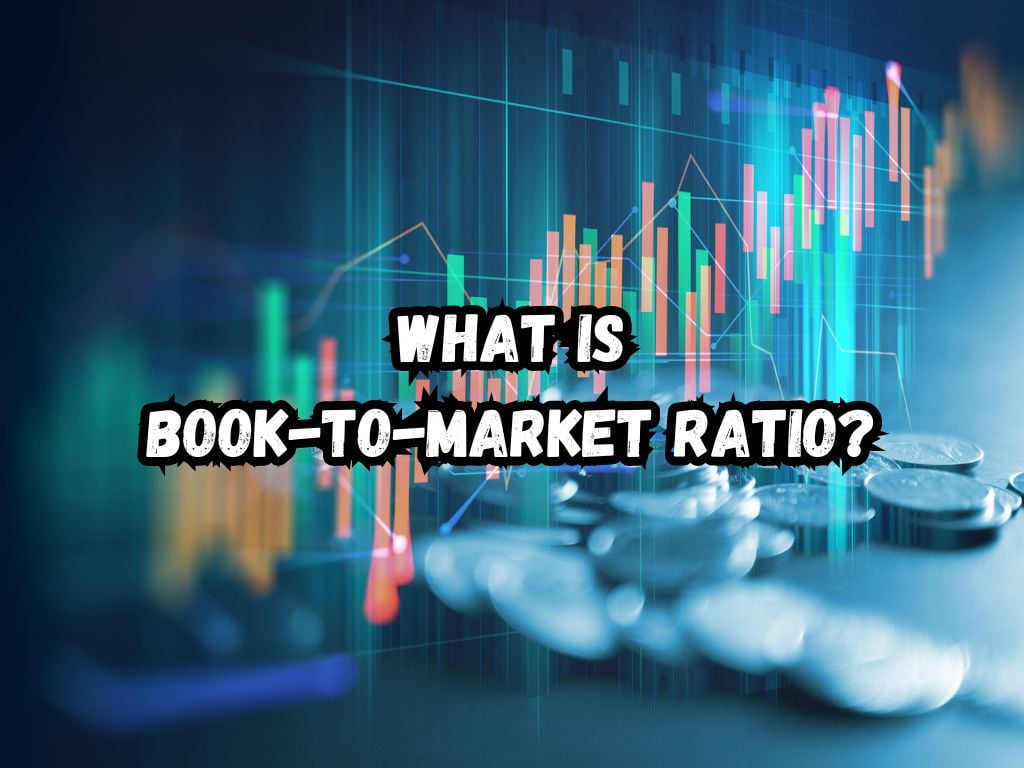Navigating the world of finance can be a challenge. One crucial aspect of investing that may seem confusing is the book-to-market ratio.
This measure provides essential insights to support your investment decisions. Let’s delve into this topic in detail.
What is the Book-to-Market Ratio?
In essence, the book-to-market ratio is a comparison of a company’s book value to its market value. It’s a financial comparison ratio used by investors to gauge the relative value of a business.
You calculate it by dividing the company’s book value per share by its market value per share.
Imagine a company with a book value per share of $10 and a market value per share of $20. The book-to-market ratio is then 0.5. It’s as simple as that.
Components of the Book-to-Market Ratio
Key to understanding the book-to-market ratio is grasping the terms ‘book value’ and ‘market value.’ Book value is an accounting term. It represents a company’s total assets minus its liabilities. You can find this figure on a company’s balance sheet.
Market value, on the other hand, is driven by the stock market. It’s the price at which shares of a company trade on an exchange.
It’s the price that investors are willing to pay for the company’s shares. The balance of these two values defines the ratio.

The Significance of Book-to-Market Ratio in Investment Decisions
The book-to-market ratio performs two crucial roles. First, it provides a measure of the company’s intrinsic value.
Second, it helps investors assess the risk associated with the company’s shares. Together, these benefits equip investors with meaningful insights that supplement other financial metrics.
Interpreting High Vs. Low Book-to-Market Ratio
A high book-to-market ratio can indicate that the company’s shares are undervalued. It suggests that the company’s intrinsic value is higher than its market value. Conversely, a low ratio can signal overvaluation. It hints that the market price is higher than the company’s intrinsic value.
But as all good investors know, the story is rarely cut and dry. An array of factors can influence the interpretation of these ratios.
Book-to-Market Ratio in Financial Analysis
Portfolio management relies on the book-to-market ratio. It aids in the diversification process and influences asset allocation strategies. The ratio also varies from one sector to another.
Some industries may naturally have higher or lower book-to-market ratios due to inherent business differences.
Limitations and Considerations
While the book-to-market ratio serves as a useful tool, it’s not without its limitations.
First, it may not accurately account for intangible assets, like brand value or intellectual property. If a company possesses significant intangible assets, the ratio may provide a skewed perception of its worth.
Second, the book-to-market ratio might be less relevant for companies in some industries. For instance, sectors with heavy intangible assets like tech and services may require other evaluation metrics.
Practical Tips for Investors
No tool is effective without a strategy. Incorporating the book-to-market ratio into your analysis requires cautious interpretation. It’s just one piece of a much larger financial puzzle.
To maximize its use, link it with other financial metrics. Analyze these figures while keeping in mind the qualitative aspects of investment decisions. Factors such as company leadership, market conditions, and industry trends are all important.
Many reliable financial platforms provide crucial data on book-to-market ratios. Trusted sources like Morningstar or Yahoo Finance can prove invaluable for investors seeking insights.

Frequently Asked Questions
How often should the book-to-market ratio be assessed for investments?
This metric should be reviewed regularly, but the exact frequency will depend on your investment strategy.
Does a high book-to-market ratio always mean a company is undervalued?
Not necessarily. The ratio works best when combined with other metrics and qualitative analysis tools.
Can the book-to-market ratio predict the future performance of a company?
No single ratio can guarantee future performance. However, a high book-to-market ratio could suggest potential for future positive returns.
How do I find the necessary data to calculate the book-to-market ratio?
Most financial information needed can be accessed on trusted financial news platforms like Bloomberg or Yahoo Finance.
Is the book-to-market ratio relevant for all types of companies, including tech firms with high intangible assets?
There are limitations to the book-to-market ratio for companies with heavy intangible assets. In these cases, investors may lean more on ratios like Price-to-Earnings or Price-to-Sales.
Conclusion
The book-to-market ratio is a fundamental metric for any savvy investor. It provides insights into a company’s financial health and relative value. While it should never be a sole determinant, it adds depth to your investment analysis.
By understanding and applying this metric, you can enhance your financial knowledge. This will ultimately support more informed decision-making in the investment process.


 Tags:
Tags:










